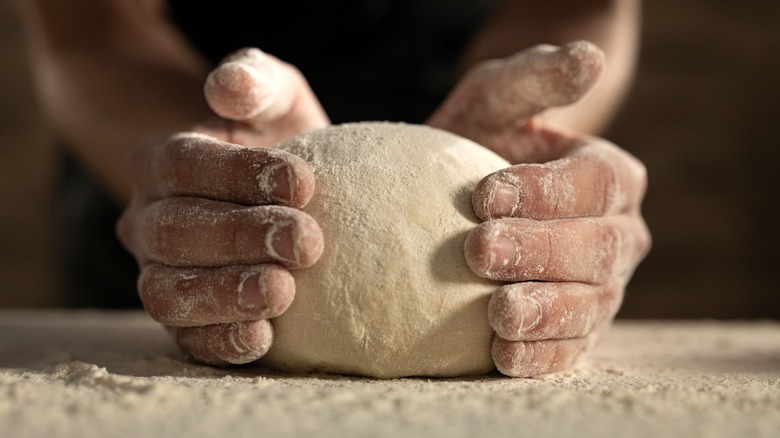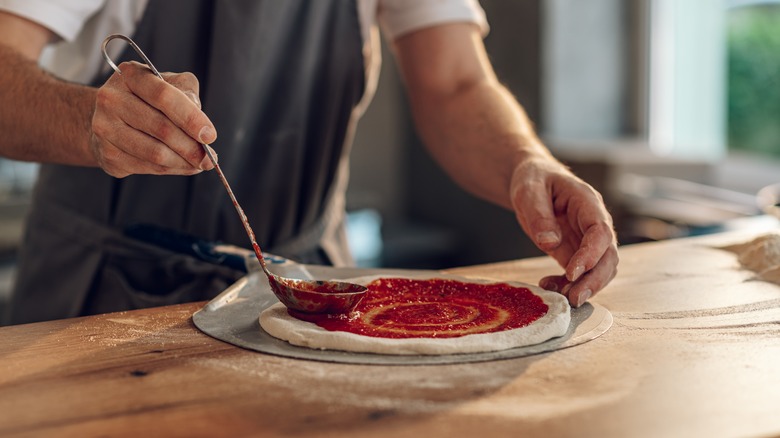Water Temperature Can Make Or Break Your Homemade Pizza
When you're baking up some homemade pizza, a delicious crust is an essential part of the meal — it serves as the base for your sauce, cheese, and toppings. Most pizza crust recipes call for the use of yeast since dough made without yeast will wind up with a denser, chewier consistency. But before adding the ingredient to the dough mixture, you'll need to make sure it's ready to bake with.
Proofing yeast is an easy test to make sure the ingredient is active, ensuring that it will yield the best baking results. The fastest way to check is to add the yeast to some warm water with a little sugar, then wait for it to adopt a foamy consistency.
Though this test is pretty quick and easy, using the wrong temperature water could cause problems for your pizza dough. The temperature could even have an impact on the flavor of your homemade pizza. Cold water might help the flavor develop a little longer, while hot water could make the crust taste a little more sour.
Both warm and cold water can affect the results
If your water is too cold when proofing your yeast and adding it to the dough, it may not be able to produce carbon dioxide as quickly as needed for the recipe. This will also restrict the gluten development in the crust, so the dough may not be able to properly rise. Although cold water may not necessarily be harmful to your pizza dough, it might not create the results you're hoping for either, if you want a perfectly fluffy, bready base in a short amount of time.
Hot water, on the other hand, can be dangerous for the dough. Water temperatures over 120 degrees Fahrenheit will damage the yeast, while anything 140 degrees or hotter will kill it completely. The high heat will stop the yeast from developing carbon dioxide, which is essential for helping the dough rise. This can lead to deflated dough, which will have a denser bite, and will be harder to bake up in the first place.
Different yeasts need different temperatures
The water temperature can be measured with a kitchen thermometer, ensuring that it is ideal for allowing your yeast to proof. Generally, if the water is too hot when placed on the inside of your wrist, it'll be too hot for the yeast. However, there's no one right answer for what it should be heated to — the ideal temperature will be entirely dependent on which type of yeast you're using in your bakes.
Fresh yeast does best in temperatures ranging from 95 to 100 degrees Fahrenheit. Active dry yeast likes things a little warmer, ranging from 105 to 110 degrees. Instant yeast, however, is a little more heat resistant, thanks to the way it's added to recipes. It's mixed first with flour, and the water — which should be between 120 to 130 degrees Fahrenheit — is added afterward.
If you're planning to let your dough rise for a few hours, you can proof your yeast at room temperature too. At around 70 degrees Fahrenheit, your pizza dough will rise over time — it may just require a little bit of planning ahead before dinnertime.


